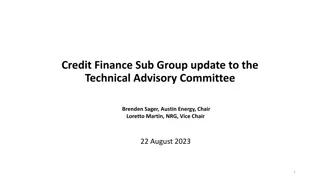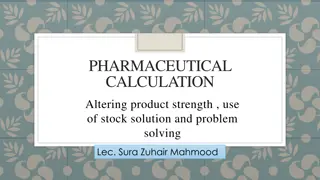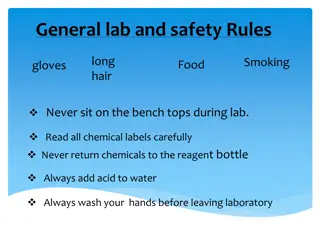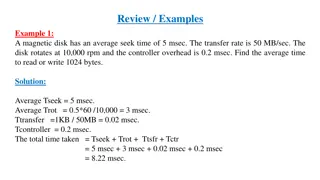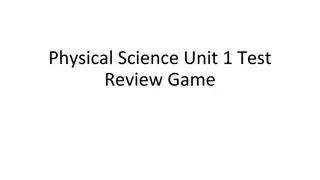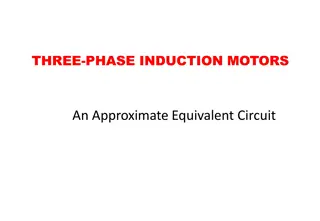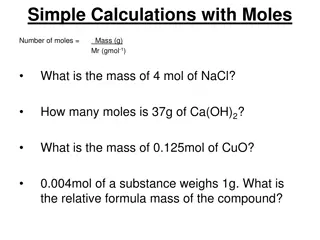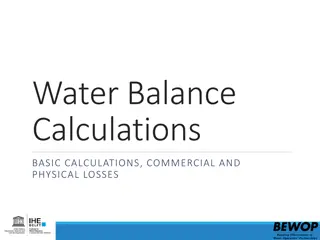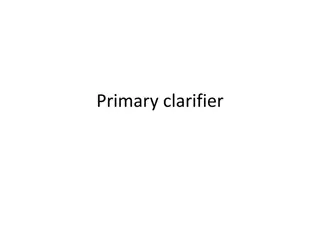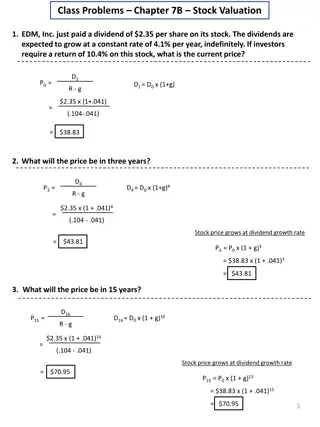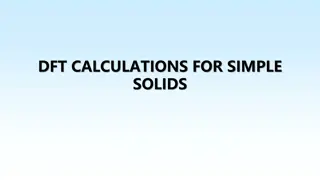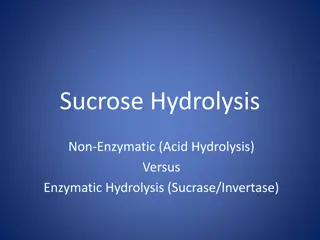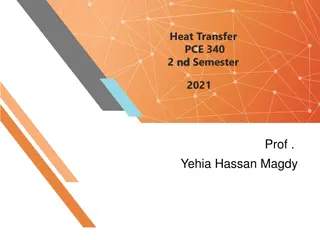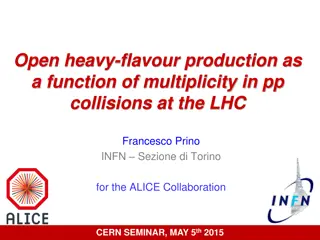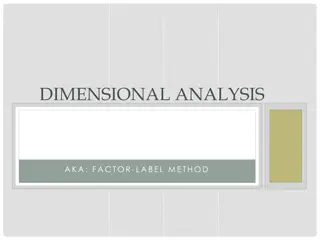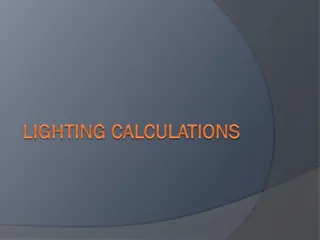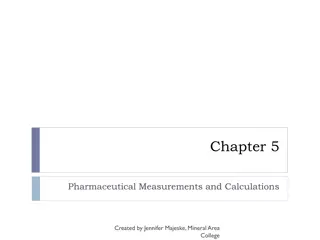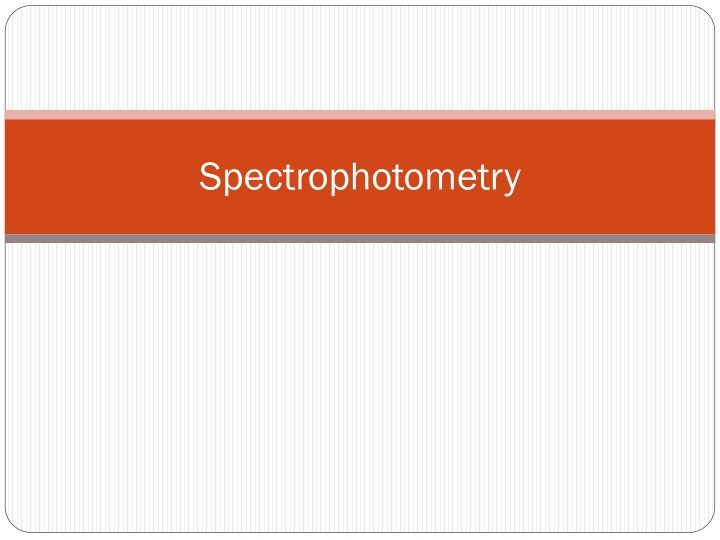
Spectrophotometry and Beer Lambert Law
Learn about spectrophotometry, a vital analytical technique for both qualitative and quantitative analysis. Explore how a spectrophotometer works, the Beer Lambert Law, and the significance of light absorption in scientific measurements.
Download Presentation

Please find below an Image/Link to download the presentation.
The content on the website is provided AS IS for your information and personal use only. It may not be sold, licensed, or shared on other websites without obtaining consent from the author. If you encounter any issues during the download, it is possible that the publisher has removed the file from their server.
You are allowed to download the files provided on this website for personal or commercial use, subject to the condition that they are used lawfully. All files are the property of their respective owners.
The content on the website is provided AS IS for your information and personal use only. It may not be sold, licensed, or shared on other websites without obtaining consent from the author.
E N D
Presentation Transcript
Spectrophotometry Spectrophotometry is the measurement of light absorption or transmission . It is an analytical technique that is applied to obtain valuable information , such as the identity of an unknown compound by their characteristic absorption spectra (qualitative analysis ) , and determination of the unknown concentration of an analyte (quantitative analysis ) . Spectrophotometry is used for both and quantitative and qualitative analysis . Enzyme catalyzed reactions can be followed by measuring the absorption of the substrate or product .
Spectrophotometer A Spectrophotometer is an instrument used to measure the amount of light transmitted or absorbed by a sample . Components of the Spectrophotometer include : 1- a light source . 2- a collimator or focusing device , that transmits an intense beam of light . 3- a monochromator , that divides the light beam into its component wave-lengths . 4-A selector device for selecting the desired wavelength . 5-A compartment in which the sample is placed (cuvette). 6-A photodetector . 7-An electrical meter to record the output of the detector .
Beer Beer Lambert Law Lambert Law The fraction of the incident light that is absorbed by a solution depends on the thickness of the sample (path length l ). The concentration of the absorbing compound (C) . The chemical nature of the absorbing compound . The relationship between the concentration C , path length of light l , and the light absorbed by a substance is expressed mathematically in the Beer Lambert law . Log I / I = A , Log I / I = A = a c l . I = Transmitted light . I = Incident light . A = Absorbance or optical density O.D. a= Absorption coefficient or extinction coefficient for a particular absorbing compound . Light absorption follows an exponential rather than a linear law . If the concentration is expressed in Molarity a becomes the molar absorption coefficient am, or Molar extinction coefficient .
Beer Beer Lambert Law Lambert Law If the concentration is expressed in g/l a becomes the specific absorption coefficient am = asx mw . am is most commonly used in biochemistry ,and the path length l is almost always 1cm , thus the units for am is M-1cm-1. The absorption coefficient varies in different substances , it also varies with varying wave-lengths also . am340 refers to the molar absorption coefficient at 340nm .
Beer Beer Lambert Law Lambert Law Blank solution: Blank ; is a solution that is necessary in all spectrophotometry studies . It should contain all components of the assay or test solution except the component who s absorbance is being measured . Purpose of the Blank : The blank will cancel out the absorbance of the substances in the background so that the absorbance of the tests will be that of the compound under study only . Note : Glass cuvettes are not to be used in the U.V region , since the glass itself will absorb light thus leading to a false high result . In the U.V region Quartz cuvettes are to be used .
Solutions Containing One Absorbing Substance Solutions Containing One Absorbing Substance Example :A solution containing 2g/l of a light absorbing substance in a 1cm cuvette transmits 75% of the incident light at 260nm . Calculate the transmission of a solution containing a) 4g/l , b) 6g/l . c) If the mw is 250 calculate am, and calculate the absorbance in case a and b , d) What type of cuvette should you use here ? Why ? Since A = Log I / I A = log 1.0 /0.75 = 0.124 Since A = asc l , thus as= A /c l = 0.124/2 = 0.06 , so as= 0.06 . a)Since log I / I = asc l Log 1.0 logI = 0.06 x c x l . 0 log I = 0.06 x c x l . - log I = 0.06 x 4 x 1 = - 0. 24 I = antilog - 0. 24 = 0.57 , 57% b) log I / I = asc l Log 1.0 logI = 0.06 x 6 x1.
Solutions Containing One Absorbing Substance Solutions Containing One Absorbing Substance -log I = 0.36 Log I = - 0.36 I = antilog - 0.36 = 0.436 . C) am= asx mw = 0.06 x 250 = 15 . d) quartz cuvettes should be used at the U.V range . Absorbance in case b A = 0.06 x 6 x 1 = 0.36 .
Solutions Containing One Absorbing Substance Solutions Containing One Absorbing Substance Example : A solution containing 10-5M ATP , has a transmission 0.702 (70.2% )at 260 nm in a 1cm cuvette . Calculate a) the transmission of the solution in a 3cm cuvette . b)the absorbance of the solution in a 1cm and 3cm cuvette . c) The absorbance if the concentration increased to 5x 10-5M of ATP , in a 1cm cuvette . a) A = Log I / I = amc l A = log 1.0 / 0.702 = 0.152 0.152 = am x 10-5 x1 am = 0.152 / 10-5 = 15200 M-1cm-1 A = 15200 x 10-5 x 3 = 0.456 Since A = Log I / I , 0.456 = log 1.0 / I 0.456 = log1 log I = 0 log I = - log I Thus I = antilog - 0.456 = 0.349 . 34.9% b) A in a 1 cm cuvette . A = 15200 x 10-5 x 1 = 0.15 c) A = 15200 x( 5x 10-5 ) x 1 = 0.76
Solutions Containing One Absorbing Substance Solutions Containing One Absorbing Substance Protein determinations : Proteins in solutions can be determined spectrophotometricaly by several methods for example : a)Colorimetrical method such as : Biuret metohd : The biuret method is based on the reaction of Cu2+with peptides in an alkaline solution producing a purple complex that has an absorption maximum at 540nm. Proteins + Biuret reagent -----alkaline media ------> purple complex ( max absorbance at 540nm) . b) Direct spectrophotomety : The absorbance at 280nm can be used to determine protein concentration in solutions . (since proteins have a distinct absorbance maximum at 280nm due to their aromatic amino acids ).
Solutions Containing One Absorbing Substance Solutions Containing One Absorbing Substance Example : A protein solution (0.3ml) was diluted with 0.9ml of water . To 0.5ml of this diluted solution , 4.5ml of biuret reagent was added and the color was allowed to develop . The absorbance of the mixture at 540nm was 0.18 in a 1cm diameter tube . A standard solution (0.5ml containing 4mg of protein/ml )plus 4.5 ml of biuret reagent gave an absorbance of 0.12 in the same size test tube . a)Calculate the protein concentration in the undiluted unknown solution .b) What is the composition of the blank here ? A) Concentration of standard Cst = 4mg/ml . Thus Cst = 4g/L . Astandard= as x C x l , 0.12 = as x 4 x 1 , So as = 0.12 / 4 = 0.03 Atest = as x C x l , 0.18 = 0.03 x C x1 So Ctest= 0.18 / 0.03 = 6g/l = 6mg/ml The concentration of protein in the undiluted solution , Cundiluted = 6 x 1.2/0.3 = 24mg/ml . b)The blank should contain 4.5ml of biuret and 0.5ml of distilled water only .
Solutions Containing Two Absorbing Substance Solutions Containing Two Absorbing Substance Example : a solution containing NAD+ and NADH had an absorbance of 0.311 in a 1cm cuvette at 340nm , and 1.2 at 260nm . Calculate the concentration of the oxidized and reduced forms of the coenzyme in the solution . Both NAD+ and NADH absorb at 260nm , but only NADH absorbs at 340nm . am Compound NAD+ NADH 260nm 18000 15000 340nm 0.0 6220 Absorbance at 340nm represents the absorbance of NADH only since NAD+ does not absorb at that wavelength . So the concentration of NADH can be obtained . A340nm = ANADH = amx C x l 0.311 = 6220 x C x 1 So CNADH = 0.311/6220 = 5x 10-5 M. A260nm = ANADH + ANAD+ ( since both absorb at this wavelength )
Solutions Containing Two Absorbing Substance Solutions Containing Two Absorbing Substance ANADH = amx C x l = 15000 x 5 x 10-5x1 = 0.75 . Thus ANAD+= A total- ANADH= 1.2 0.75 = 0.45 Since ANAD+ = amx CNAD+ x l 0.45 = 18000 x CNAD+x 1 CNAD+ = 0.45 / 18000 = 2.5 x 10-5M Example : Ten grams of butter were saponified , the non-saponifiable fraction was extracted into 25ml of chloroform . The absorbance of the chloroform solution in a 1cm cuvette was 0.53 at 328nm and 0.48 at 458nm . Calculate the carotene and vitamin A content of the butter . a1% = absorption coefficient when concentration expressed in 1g/100ml . a 1% Compound Carotene Vitamin A 328nm 340 1550 458nm 2200 0.0
Solutions Containing Two Absorbing Substance Solutions Containing Two Absorbing Substance The absorbance at 458nm represents the absorbance of Carotene only , thus its concentration can be obtained . A458nm = Acarotene A458nm = a1%x Ccarotenex1 = 2200 x Ccarotenex1 Ccarotene= 0.48/2200 = 2.1 x 10-4g/100ml Thus the carotene content in the 25ml of chloroform extract is 2.1 x 10-4 --------> 100ml ? --------> 25ml the carotene content in the 25ml of chloroform extract = 25 x( 2.1 x 10-4 ) / 100 = 5.2 x 10-5 g = 5.2 x 10-2 mg . The carotene content per gram of butter = 0.052 / 10 = 5.2 x 10-3 mgcarotene/ g of butter Absorbance at 328nm is the absorbance of Acarotene + A vitamin A Acarotene = a1% x C x l = 340 x 2.1 x 10-4 x1 = 0.0714 . Avitamin A = A Total-Acarotene
Solutions Containing Two Absorbing Substance Solutions Containing Two Absorbing Substance Avitamin A = 0.53 0.0714 = 0.458 Cvitamin A = A / a1% x 1 = 0.458/1550 = 2.9 x 10-4 g/100ml the vitamin A content in the 25ml of chloroform extract = 25 x 2.9 x 10-4 / 100 = 7.25x10-5g = 0.073mg The vitamin A content of the butter /g = 0.073/10 = 0.0073mg / g of butter = 7.3 g / g of butter .

